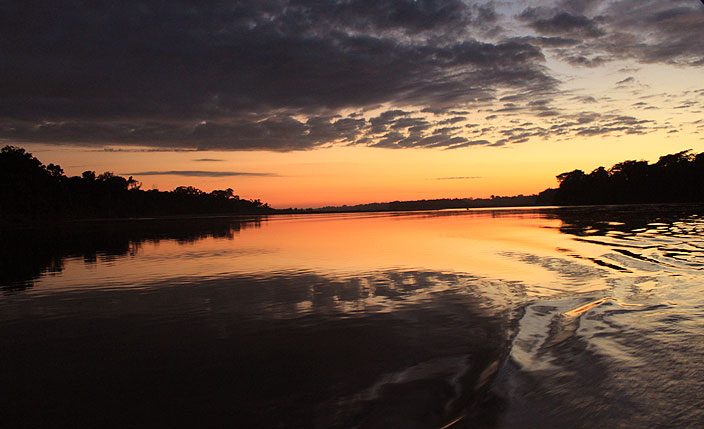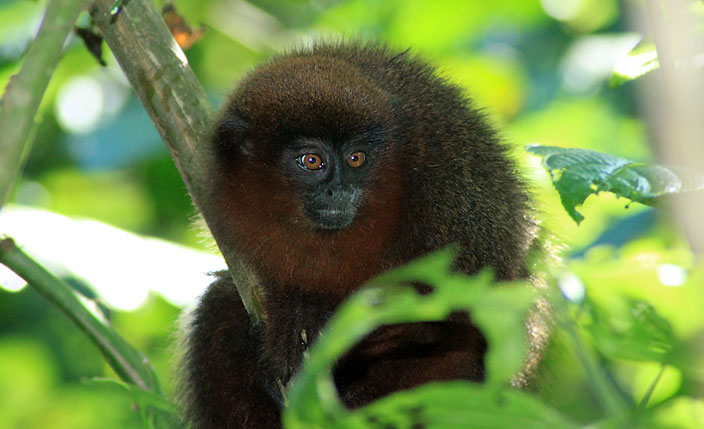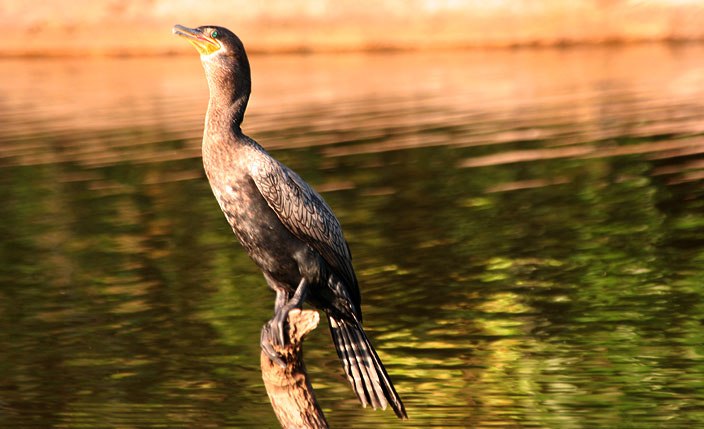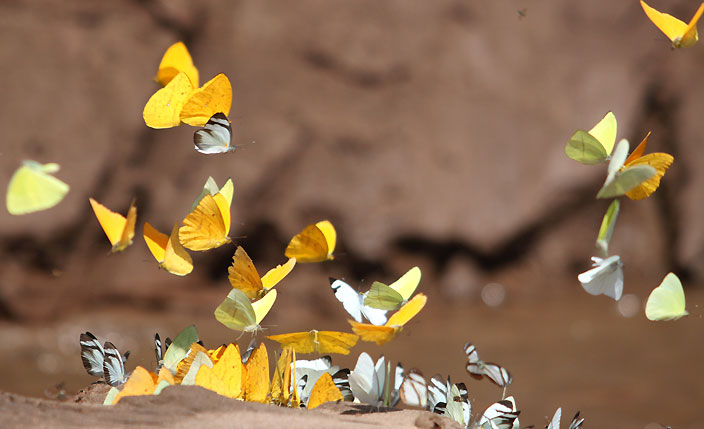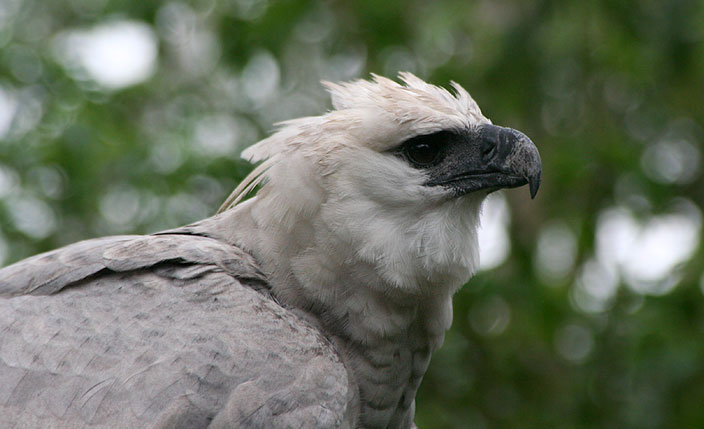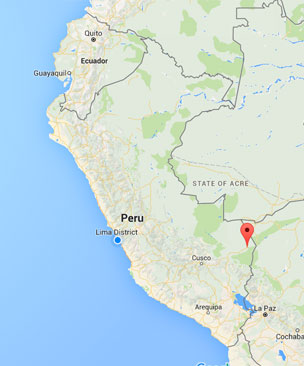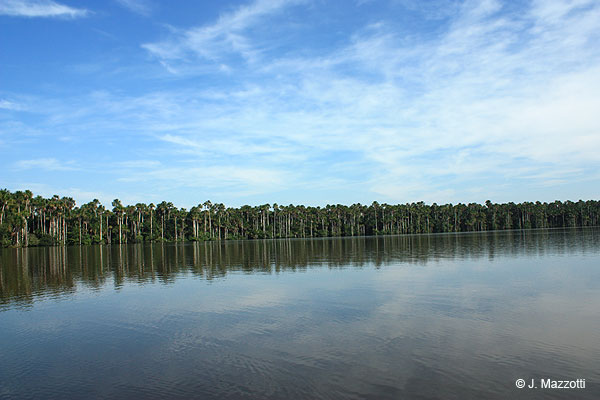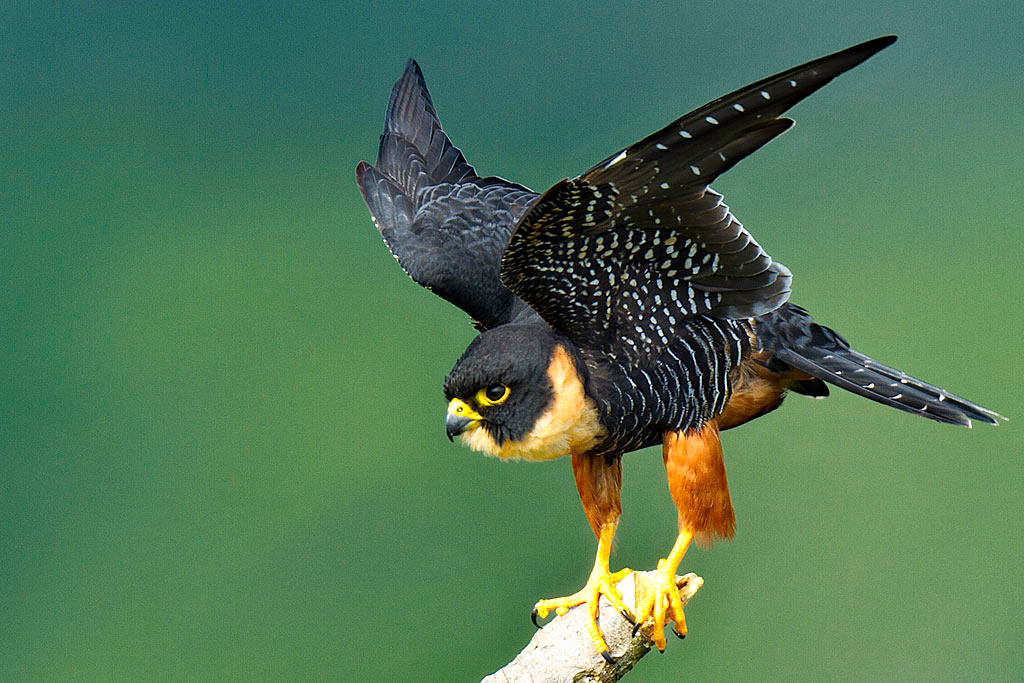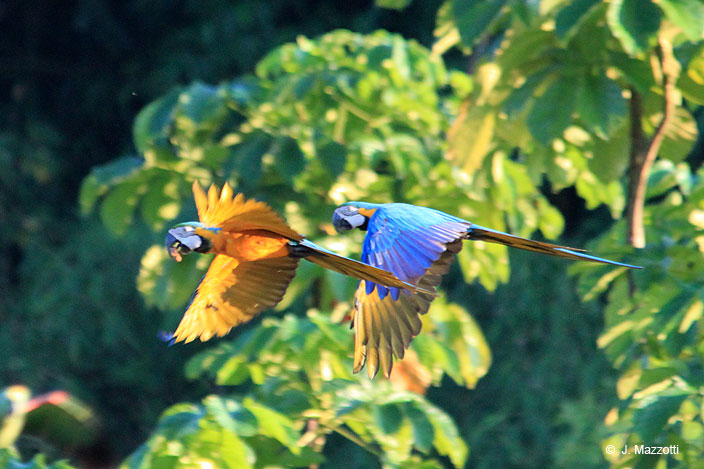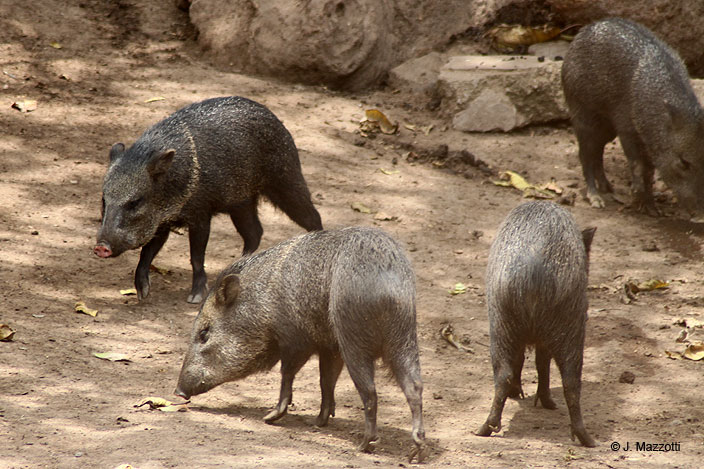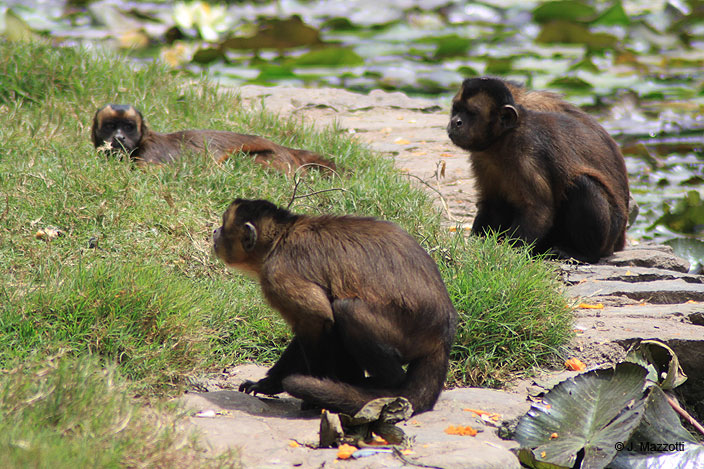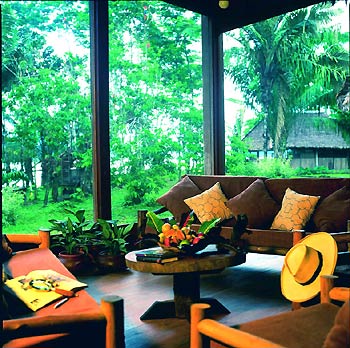Travel to Tambopata
Amazon Tours and Lodges
Top things to do in Tambopata
Tambopata is for fans of walking, bird and wildlife watchers, nature lovers, scientific tourism, and those wishing to visit communities.
 |
 |
 |
Tambopata Travel Guide - Planning to travel to Tambopata
Madre de Dios is home to never-ending forests, winding rivers, oxbows lakes, and abundant wildlife. It is a wildlife reserve and refuge for endangered species, like the maned wolf and marsh deer. This region is also home to indigenous communities that promote ecotourism in regions with some of the richest biodiversity in the world, such as Lake Sandoval, Lake Valencia, Tambopata National Reserve, Manu National Park and Bahuaja Sonene National Park, the only tropical, humid savannah ecosystem in Peru. This experience can only be organized with guides and specialist agencies.
Tambopata National Reserve is the most visited area in Madre de Dios, home to one of the richest ecosystems in the world and offers a unique experience for those who want to discover the Amazon rainforest.
The conventional way to easily reach this area is to navigate by the rivers and staying in the jungle lodges that offer the service of expeditions for wildlife encounter, lodging and meals. There are daily flights to Puerto Maldonado from Lima and Cusco (55 minutes flight).
Inside the Tambopata National Reserve, areas enabled for tourists and visitors exist, and other areas are only restricted for the entrance of investigators. In the area for tourists, exist lodging facilities. To really appreciate and be amazed by the Amazon's scenery, 4 days are needed.
Our guide to Tambopata gives you expert recommendations on the best attractions, excursions, jungle lodges and more.
Sights & Attractions in Tambopata
Tambopata National Reserve
The best place to bird and wildlife watchers. Is the most visited area in Madre de Dios, home to one of the richest ecosystems in the world and offers a unique experience for those who want to discover the Amazon rainforest. It boasts an incalculable wealth of biodiversity: 900 species of bird have been discovered in the area, along with 1,234 species of butterfly, 94 types of fish, 127 amphibians and 74 reptiles. Located between the basins of the Tambopata and Heath Rivers, the reserve covers an area of 274,690 hectares and is found in both the Madre de Dios and Puno departments. The main tourist access is 45 Km. / 28 miles south of Puerto Maldonado (2 hours by motorboat).
Protected Natural Areas
The best-protected tract of the world's most biodiverse forest. Madre de Dios is home to never-ending forests, winding rivers and abundant wildlife. It is a wildlife reserve and refuge for endangered species, like the maned wolf and marsh deer. This region is also home to indigenous communities that promote ecotourism in regions with some of the richest biodiversity in the world. The Tambopata National Reserve, Bahuaja Sonene National Park, Alto Purús National Park, Manu National Park, Communal Reserve Amarakaeri, Purús Communal Reserve and private conservation areas are the main natural settings located in the department of Madre de Dios, forming one of the most mega-diverse area on the planet. Some of them with facilities for visiting tourists, to enter this protected areas, prior authorization from SERNANP is required. All expeditions must be accompanied by an official guide.
Exploring the Amazon Jungle
To have the best experience, you should stay at least 4 days and stay in one of the many Amazon Jungle Lodges renowned for their high quality service. These facilities operate on some hidden river or on the shores of a lake concealed in the thickness of the rainforest with its constant chorus of sounds and the psychedelic color show in the sky. The operators of Jungle Lodges will be waiting for you at the airport from your arrival to Puerto Maldonado, and after your visit, they return you directly to the airport, or to Puerto Maldonado. Usually they offer services of visits and guided for wildlife encounter to Tambopata National Reserve. Some lodges include visits to Valencia Lake, Sandoval Lake, Gamitana creek or Concepción.
Aborigines Jungle Natives
In the pristine forests of Madre de Dios department, inhabit jungle tribes, as the Ese'eja, Machiguengas, the Huarayos, the Mashcos, the Arasaris (practically exterminated), the Huachiparis, the Shirenis, the Iñaparis, the Amaricaris, almost all incorporated to the civilization by evangelical missionaries, but they conserve much of their ancestral customs. In recent times (2013) have been sighted aborigines that have never had contact with outside civilization. This population has many myths and legends, some of them mystical; there is a great diffusion of the folkloric and quack medicine on the base of the great quantity of medicinal plants that exist. You can participate in Ayahuasca medicinal ritual.
E'se Eja, an ethnic group that has lived in the area since ancient times and knows every inch of the reserve. The E'se Eja are currently organized in three communities: Palma Real, Sonene and Infierno. The latter community works together with private companies to offer diverse activities and tourism services including lodging and guided tours, among others. The project has been considered a global success, thanks to the cooperation between the community and a private company to offer a beneficial ecotourism product.
Puerto Maldonado
Puerto Maldonado is the city, capital of the region, founded in 1902, it's located at the confluence of the Madre de Dios and Tambopata rivers. Is the jumping-off point for exploring Amazonia and journeys along the Tambopata river and lower part of the Madre de Dios river. Tourists stroll through the Plaza de Armas, nearby streets and restaurants. In the city basic public services, small hotels and restaurants, river port and airport, and offers lively nightlife and an excellent opportunity to take a pleasant break both before and after taking trips to the jungle. Places around it as Sandoval Lake and Valencia Lake.
How to travel to Tambopata
Commercial flights leave daily from Lima and Cusco and connections to Puerto Maldonado, or bus transportation from Cusco.
